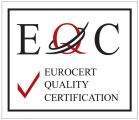(EU) 2016/425 – CE Certification for Personal Protective Equipment PPE
The new PPE regulation has been modernized in many areas and adapted to the new legal framework of the EU (New Legislative Framework – NLF). It contains requirements for the design and manufacture of PPE as well as regulations for the free movement of PPE in the EU. The scope of the PPE regulation has not changed significantly compared to the directive. It also includes any device and any means designed and manufactured to be worn by a person as protection against one or more risks.
Risk categories of personal protective equipment according to PPE regulation (EU) 2016/425
Every PPE is to be classified according to the risk categories according to Annex I of the PPE Regulation (EU) 2016/425. The categorization is made according to the risk against which a PPE is supposed to protect. A distinction is made between the following three categories:
- Category I only includes minor risks
- Category II includes risks that are not listed under Category I or Category III. Any PPE that is not subject to Category I and III is automatically
- Category II.
- Category III only includes those risks that can lead to very serious consequences such as death or irreversible damage to health
In contrast to the old PPE directive, risk category III has been expanded to include the five risks of drowning, cuts from hand-held chainsaws, high pressure jets, injuries from projectiles or knife stabs and harmful noise. This means that PPE that protects against these risks must also go through the strictest conformity assessment procedure
(EU) 2016/425 – CE Certification for Personal Protective Equipment PPE
The new PPE regulation has been modernized in many areas and adapted to the new legal framework of the EU (New Legislative Framework – NLF). It contains requirements for the design and manufacture of PPE as well as regulations for the free movement of PPE in the EU. The scope of the PPE regulation has not changed significantly compared to the directive. It also includes any device and any means designed and manufactured to be worn by a person as protection against one or more risks.
Risk categories of personal protective equipment according to PPE regulation (EU) 2016/425
Every PPE is to be classified according to the risk categories according to Annex I of the PPE Regulation (EU) 2016/425. The categorization is made according to the risk against which a PPE is supposed to protect. A distinction is made between the following three categories:
- Category I only includes minor risks
- Category II includes risks that are not listed under Category I or Category III. Any PPE that is not subject to Category I and III is automatically
- Category II.
- Category III only includes those risks that can lead to very serious consequences such as death or irreversible damage to health
In contrast to the old PPE directive, risk category III has been expanded to include the five risks of drowning, cuts from hand-held chainsaws, high pressure jets, injuries from projectiles or knife stabs and harmful noise. This means that PPE that protects against these risks must also go through the strictest conformity assessment procedure


